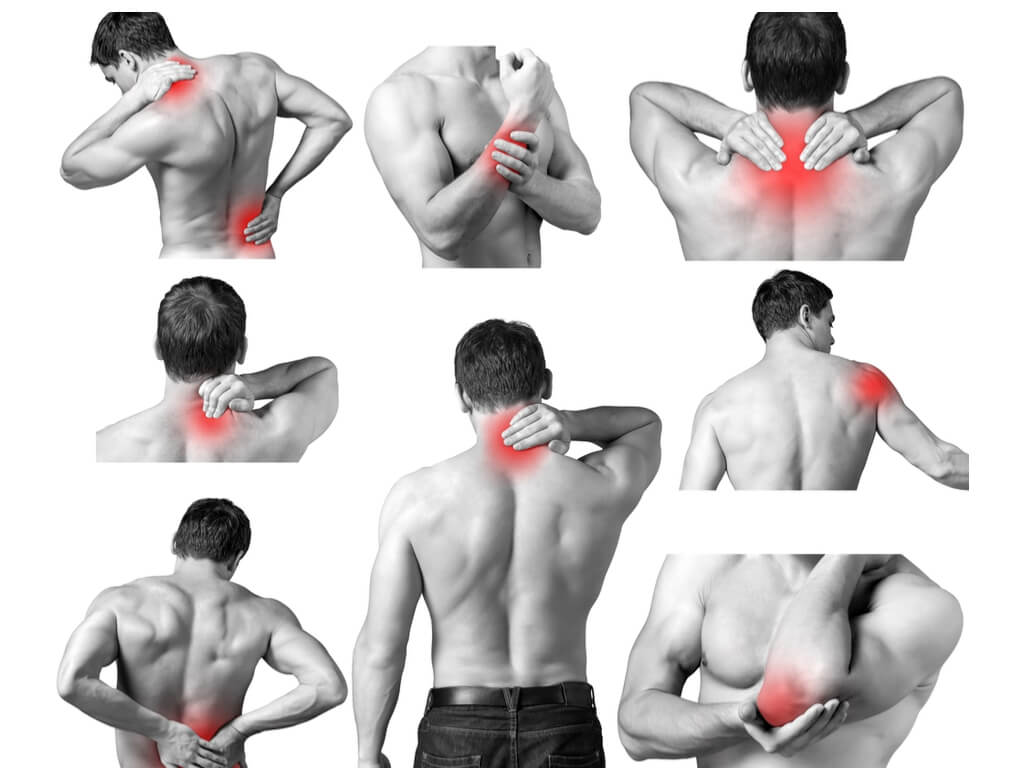Identification And Treatment Of Pain

Do you have constant pain? Don’t you know why? To start a pain treatment it is necessary to identify it first. Find out more here.

Conceptualizing pain throughout human evolution has not been easy at all, but in general terms it can be said that it is a defense mechanism that sends alarm signals to protect the body. Before starting a pain treatment, it is necessary to identify the type of ailment.
Pain is defined as both a sensory and an emotional experience that causes displeasure. To perceive pain, it is necessary to activate the sensitive nervous system and the nerve pathways that are responsible for responding to nociceptive tissue stimuli.
Data of interest
- As age advances, the pain increases.
- Women are more prone to pain than men.
- Pain affects the individual, family, social and economic level.
- A large percentage of the youth community experiences headache, while older people suffer from pain in the extremities.
Difference between pain and suffering

Suffering is considered a subjective feeling in which it is possible that there is a biological, psychological and social factor. That is, a person can experience severe pain without suffering. Such is the case of the experience during e l delivery.
On the other hand, anguish, anxiety or depression are part of suffering. This means that everything that causes wear and tear on the nervous system is part of it. The patient is afraid of experiencing horrible pain.
Pain anatomy and physiology

At the moment that the body receives the stimulus, nerve receptors, joints, nerve fibers located in the skin tissue and muscles are activated . Once they get it, the pain turns into impulses. Of which there are three types:
- Mechanoreceptors: skin pressure.
- Thermoreceptors: caused by extreme temperatures.
- Polymodal receptors: nociceptive, mechanical, thermal and chemical stimuli.
The substances that are released when there is pain are the same as in tissue alteration or damage. Among them histamine and serotonin. Others are:
- Potassium and hydrogen ions.
- Bradycin from the bloodstream.
- Prostaglandins and leukotrienes from injured tissues.
When these substances are released, the nerve impulse is initiated that aims to lower the threshold of other local nerve fibers and, in this way, an increase in activity is avoided (secondary hyperalgesia)
Hyperalgesia is when different states of pain lead to situations in which usually non-painful stimuli become painful. While the painful ones become even more intense.
Nerve fibers

- A fibers: these are classified into alpha, beta, gamma and delta types. They are responsible for conducting nociceptive impulses. They are small in size and conduct nerve impulses at 5 to 50 meters per second.
- C fibers : their conduction is slow compared to delta A fibers. These fibers respond to chemical, mechanical and thermal stimuli. There are approximately 200 type C fibers per square centimeter of skin.
Transmission of the nerve impulse to the spinal cord
The spinal cord functions as a filter ; that is, it eliminates or amplifies the messages according to their importance. First, the nerve fibers are located in the dorsal horn of the spinal cord in order to connect with neurons and interneurons.
The neurons are called laminae I, II, III and are located at any level of the dorsal horn. In this way, the A fibers contact the neurons and from there they go to the spinothalamic and spinoreticular tracts to the higher centers.
While the C fibers connect with these neurons producing spinal reflexes and that is when acute or chronic pain occurs. The pain in the same way ascends by the tracts but in a slower way. They then reach the reticular formation and from there to the limbic and hypothalamus systems.
Types of pain

In order to apply pain treatment, it is necessary to identify what type it is. These are classified taking into account factors such as: duration, location and intensity.
Duration
- Acute: limited in time and rarely due to a psychological symptom. For example neuropathic pain.
- Chronic: it is a pain with unlimited duration and is accompanied by a psychological component.
Pathogeny
- Neuropathic: it is due to a direct stimulus in the central nervous system. It is sharp and with a burning sensation.
- Nociceptive: it is the most common and is classified as: somatic and visceral.
- Psychogenic: affects the psychosocial level of the person.
Location
- Somatic: it is characterized by being a localized, stabbing pain that radiates traveling on nerve paths.
- Visceral: This pain is continuous and deep. For example colicky pain, liver metastases and pancreatic cancer.
Course
- Continuous: it is persistent during the day and does not disappear.
- Irruptive: it is produced by the movement or some voluntary action of the affected person.
Intensity
- Mild: allows you to carry out daily activities.
- Moderate: interferes with daily activities.
- Severe: it is so strong that it does not even allow to rest.
Pain treatment
The analgesic indication is essential for the treatment of pain. Particularly in the case of chronic pain. However, before ingesting the drug, a prior assessment is necessary.
First, a detailed study must be carried out to find out what causes the pain, evaluate the duration of the pain and determine if it interferes with the hours of sleep.
On the other hand, there is the visual analog scale: this method is considered the most effective and consists of a rule line identified from 0 to 10. The patient identifies with the numbers a degree of pain. On the other hand, you can opt for therapeutic methods such as pain treatment that reduce pain and allow you to fall asleep.
Pain medication
- Opioid pain relievers. They provide rapid pain relief, of moderate to severe intensity. They act on the central nervous system where the target receptors are found.
- Weak or minor opioids. Indicated for mild to moderate pain. The most representative are codeine and tramadol.
- Major opioids or narcotics. They are indicated for patients with severe pain. Morphine is used and known.
Recommendations for using a pain reliever
The first thing to do before starting pain treatment is to know well the type of pain and its intensity. Then it is necessary to act immediately at the first symptoms in order to prevent stronger pain.
Then you have to look for the most feasible route: oral, rectal or topical. Finally, you have to follow the exact schedule when taking the painkiller so as not to have lapses with pain.
Pain often goes from being a symptom to being something annoying and unwelcome that must be combated with adequate therapy. By treating pain, a large number of organic and psychological disturbances that are a consequence of the pain situation are avoided.
If you feel constant or very strong pain, it is necessary that you go to a medical consultation as soon as possible. A professional will be able to determine if it is due to some other disease or if you need to start some pain treatment.









